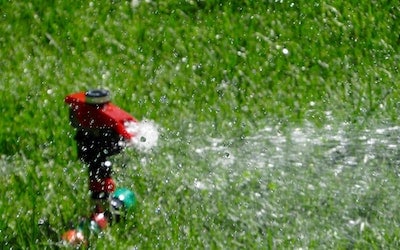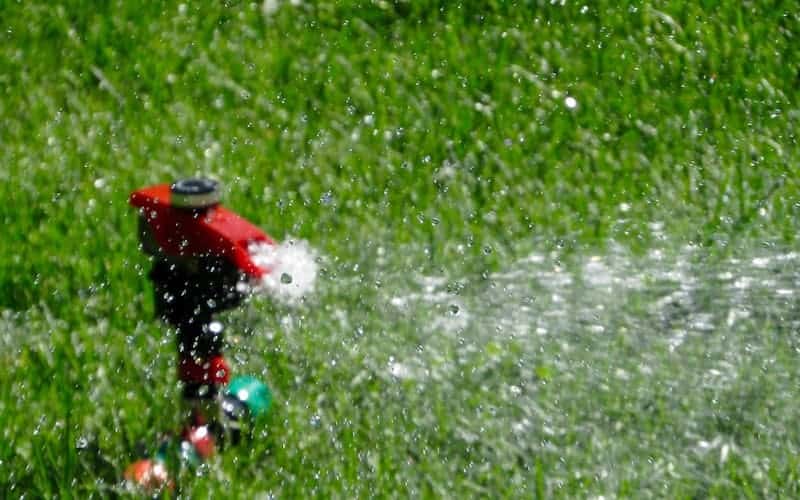How to Prepare Ground for Grass Seed
Preparation of the ground for grass seed is essential to providing a firm and fertile environment in which to grow strong, healthy grass. If you want your grass to look healthy and full, then you must go through every step to ensure that nothing like weeds, lack of nutrients, or incorrect grass seed, keeps you from having a healthy-looking lawn.
So, how do I prepare ground for grass seed? Preparing the ground for grass seed requires several steps and careful planning. Weeds have to be removed, the ground has to be treated, the soil has to be chosen, etc. This may seem overwhelming, but we are here to help! If you follow the steps below, you are guaranteed to have a healthy and full lawn.
This article will guide you through what it takes to prepare your ground for grass seed, as well as provide information about choosing the best grass seed for your needs.
Removing Unwanted Weeds and Rocks from the Soil
The first step is to remove any existing vegetation within the area that you want to plant grass seed. If you are removing existing vegetation, a weed whacker or lawn mower is best suited for clearing away old grass and weeds. Dead grass and weeds can be pulled by hand or cut with a pair of scissors as well, but using an electric lawn care tool is best.
Prevent weeds from being established by applying an herbicide inhibitor, such as Roundup, before you plant grass seed. This product should be applied to the ground where you want to grow new grass and will prevent any weeds from growing within treated areas. However, do not treat weeds more than 4 weeks before planting your seed or no taller plants will be able to grow
Next, the ground must be leveled so that it is suitable for planting. You can use dirt from your yard to provide additional depth where necessary. However, you may buy dirt from your local lawn and garden store as well. Care should be taken to avoid adding too much extra dirt as this could lead to drainage issues in the future.
Once the area has been leveled the soil must be prepared for planting. The first step is to remove any large stones or foreign objects from the area as these will prevent grass seed from germinating and growing properly in the future. You want to make sure your grass looks even and full, so removing all objects that would cause patches of grass not to grow is imperative. You can remove these things using a shovel.
Prepare the Soil for Planting
Once that is done, you are ready to prepare the soil for planting. The first step in this process is aeration. This will ensure proper drainage and water retention as well as help the area be more conducive to grass seed germination.
There are different ways of performing this task, but the key is to break up the soil and create channels so that air can be pumped into the ground. You can either use a mechanical aerator, which costs more but is faster or do it by hand using a small shovel and rake.
The next step in preparing the ground for planting grass seed is adding nutrients to the soil. These nutrients will ensure your grass grows quickly and is healthy. You can purchase fertilizer from a lawn and garden store, but some people use manure to add nutrients as well.
In general, natural fertilizers are preferable because these won’t cause additional issues in the future. If you choose to go this route make sure that you apply them at least 6 weeks before planting.
To increase plant growth there should be a minimum of one-inch actual organic material added; this does not include mulch that is applied to the surface. Organic material adds nutrients and microbes essential for healthy plant growth. Apply compost or manure around the base of the newly planted grass seed, but do not apply these materials in a circle around your newly seeded area as it will cause water to be trapped.
The Best Time for Planting Grass Seed
After you have added nutrients to the ground it will be ready for planting grass seed. The best time of year is generally spring, although you may plant in late summer if necessary. Spring is best because it allows the grass seed to grow before winter begins and gives the plant time to establish itself before hot and dry conditions appear.
If you decide to plant your seed in late summer, we recommend watering every day until your seed has grown at least 6 inches tall, this will help combat the potential hot and dry conditions that late summer often brings.
Planting in the spring also prevents the seeding process from becoming a long, drawn-out process due to poor soil conditions and will result in a much healthier lawn overall. When planting your new lawn make sure that you do not drive, walk on, or rollover your newly planted grass for at least four weeks as it will prevent the lawn from becoming established.
Choosing the Correct Grass Seed
 After preparing the area that you want to plant in, it is time to choose your grass seed. The best grass seed for your needs depends entirely on the climate and condition of your yard.
After preparing the area that you want to plant in, it is time to choose your grass seed. The best grass seed for your needs depends entirely on the climate and condition of your yard.
Some varieties of grass will grow better in certain climates than others. In addition, some seeds are better for certain uses or lifestyles. It is important to think about this variable.
If you are going to be redoing grass for a sports field there are many factors to consider. Particular grass seeds are made for sports-type activity.
For example, if soccer was played on freshly planted grass, the turf would have bald spots due to wear and tear from being worn out by running and kicking a soccer ball. This would not be the case with using grass seed specifically made for sports fields.
Factors to consider when choosing grass seed are price, climate, and purpose of the area. If you have all four seasons and a very tame climate, there is a grass seed for that. When you are looking to save money, there are cost-effective seeds. If you are seeding a sports field then you want to choose a very specific grass.
Be sure to do research and maybe talk to a professional. When you experience cold and wet conditions there are popular seeds that are made to fit that climate as well.
Be sure to examine the area that you want to plant in and determine what type of grass would best suit it; don’t assume that a general-purpose seed will work for you, do your research!
It’s Time to Plant Your Grass Seed!
You will need a water source and your grass seed, as well as any tools necessary to plant your seeds. Now it is go time!
The first step of planting the seeds into the ground is covering them with soil. Take a rake and evenly distribute the seeds over the area that will be planted. Sprinkle soil over the seeds once they are evenly spread out. Then cover the seeds about 1/4″ with soil.
Next, take a watering can and water the area until it is damp but not soaked. This will help ensure that your seed remains in place while they germinate. After you have watered the area where you planted grass seed, spread a layer of mulch over it. This will both help retain moisture and also add nutrients to the area over time. Lastly, reseed any areas that you missed from the previous seeding.
Final Tips to Remember
Depending on the size of your project, you may need to make more than one trip to complete seeding and watering. Be sure to inspect the area from time to time until grass seed becomes established. It typically takes about two weeks for grass seed to germinate. It takes another two weeks for it to become strong enough
To increase growth, add lime to the seeded area to increase the pH level of the ground; this can be done before planting grass seed or at any time after you have planted your new lawn. If lime is applied before planting, it will require 1-2 weeks for the soil amendment to be effective. It is important to wait for the required amount until you add the fertilizer.
You should only water your new lawn two times a day This depends on how dry the conditions are; be sure to avoid letting soil become completely dry between watering sessions. However, depending on the type of seed you are using, you don’t want to over-water the grass.
Once you have completed these steps your new lawn should thrive and grow. It should be an optimal environment for playing sports, enjoying family time outside, or anything else you can come up with!

